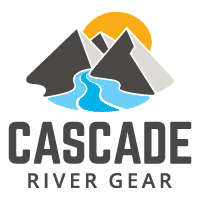Pro Tip: Fixing A Broken Paddle Blade
I have used the same Werner paddle since I started kayaking about 7 years ago. My beloved Werner Player has been with me all over the west, been lost once, and continues to get me on great surf waves. Last week I got a little aggressive backing out of my driveway and found one of the blades under the front tire. While being devastated it presented an opportunity for this blog. The blade just seemed to twist off the shaft with only the smallest crack. Seems like a job for some J.B. Weld!
What you need
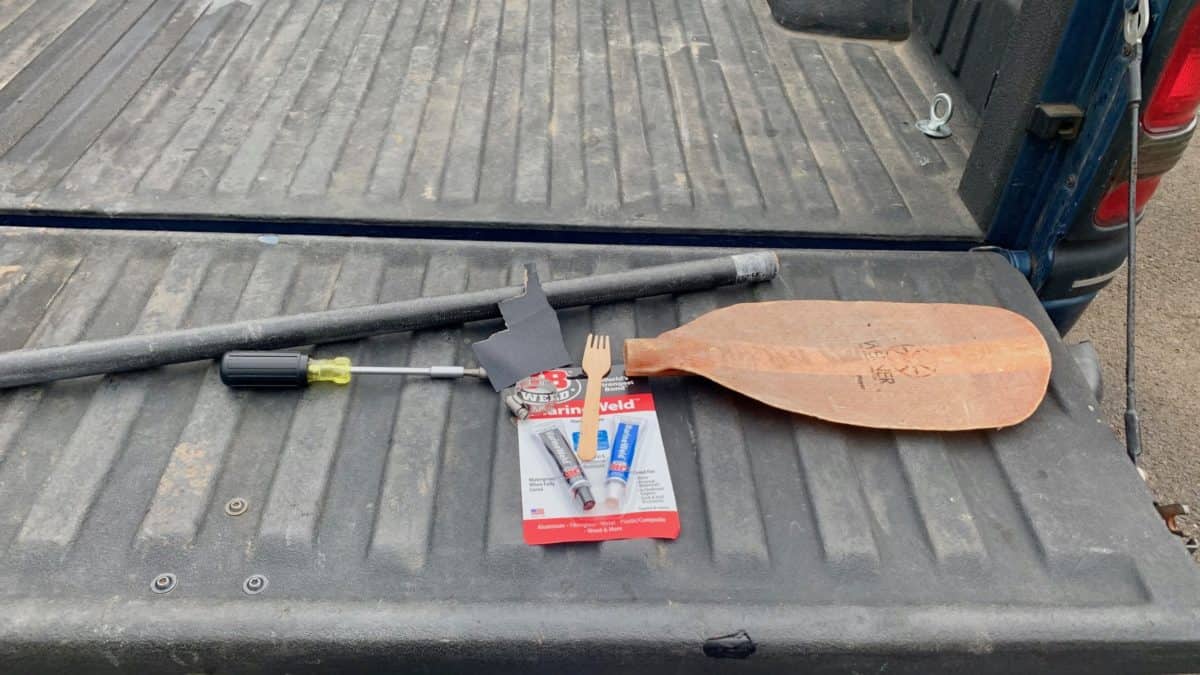
The Tools You Need
- Broken Paddle
- J.B. Weld - Marine Weld
- Sand paper - medium grit
- Hose camp
Broken Paddles
Having a paddle break where just the blade comes off is probably a situation that doesn't occur too often. My guess is that most paddle break in half on the shaft or a chunk of the blade breaks off. However, I am sure I am not the first person to have done this to their paddle. As you can see below the damage seems minimal.
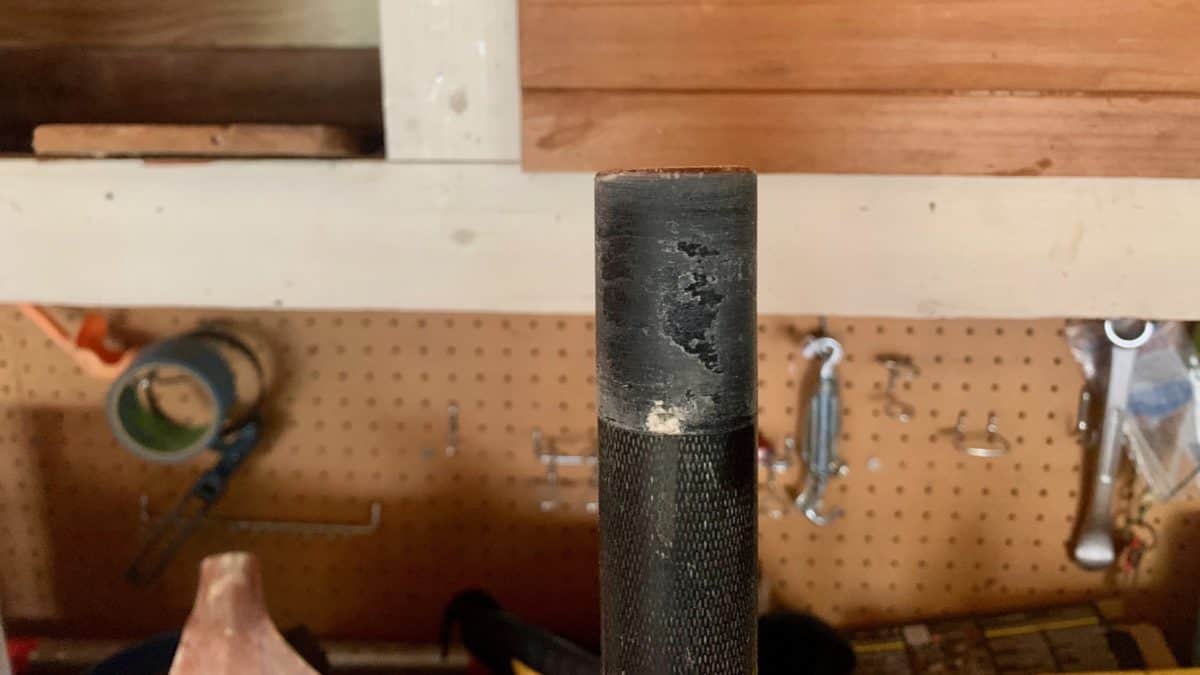
Broken Shaft End
Since the break was pretty clean I used a medium grit sand paper to sand away any old glue residue from both the shaft and inside of the blade. Before I sanded I made some guide lines on the paddle the help get the offset back to normal. Careful not to sand those marks off.
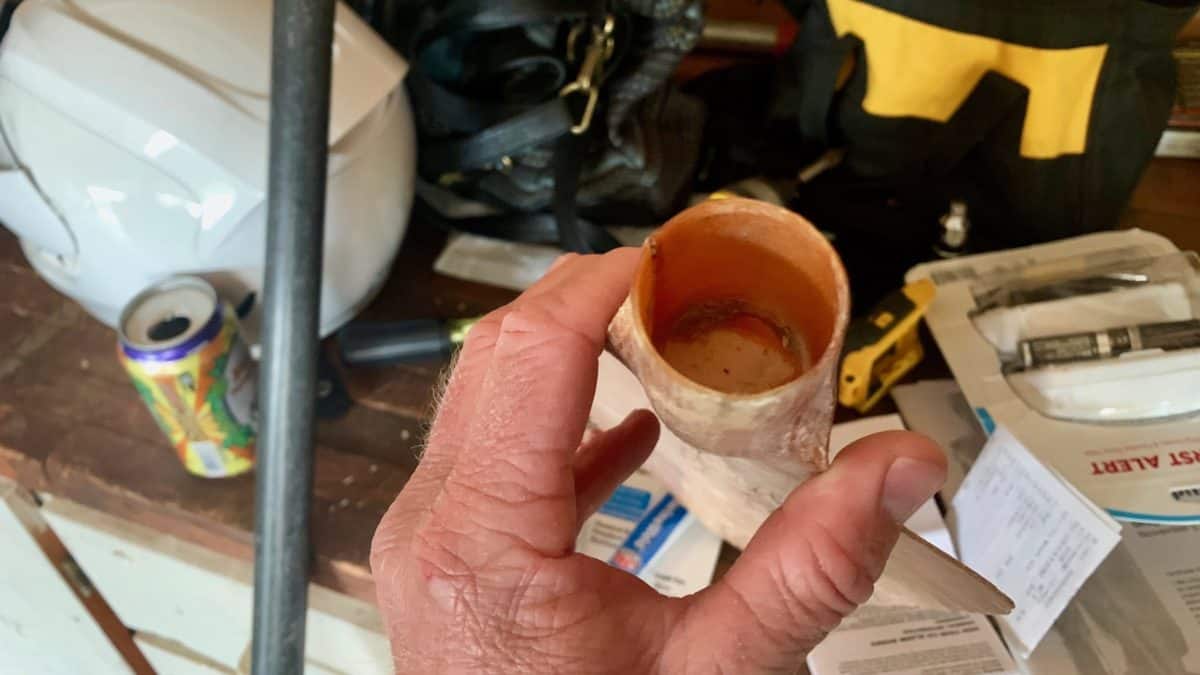
Broken Blade End
Epoxy Mixing
The J.B. Weld is pretty easy to use and mix. It is a 1:1 ratio of both parts. I used the bottom of a can mix everything up. Don't skimp on this part or you will have to mix the parts more than one time. Cure time is 15-24 hours.
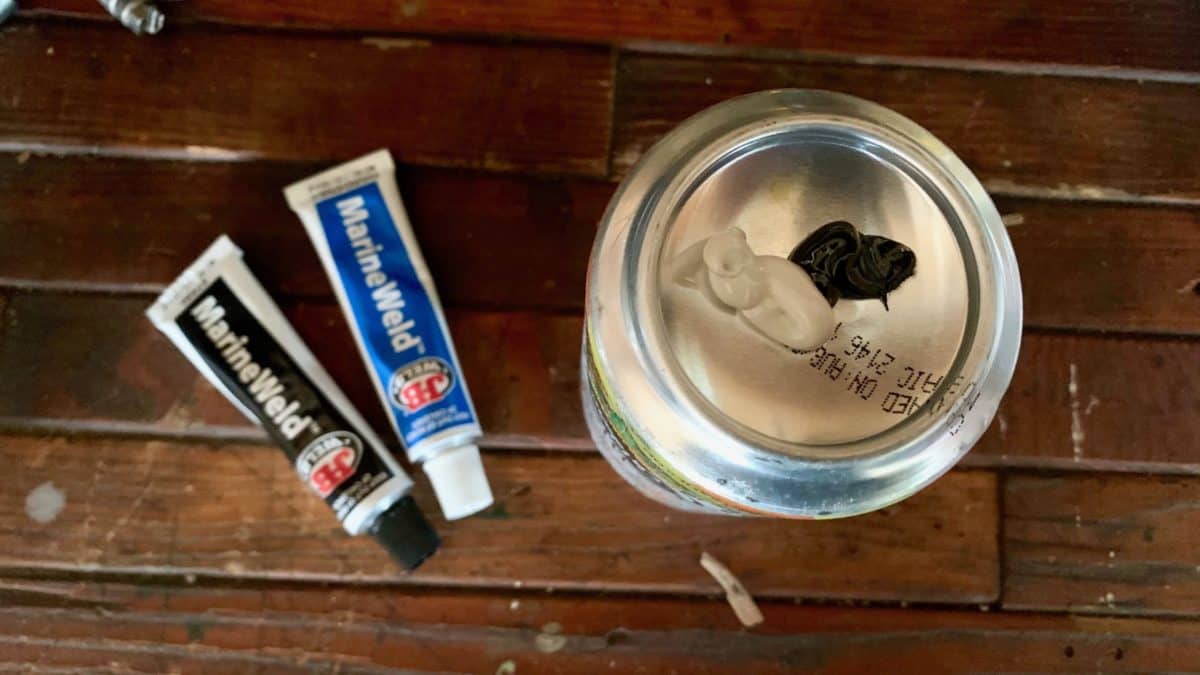
Mixing 2-Pary Epoxy
Glueing
The epoxy is very thick and a bit hard to spread. I used a wooden popsicle stick to mix as well as spread. It worked really well, especially on the inside of the blade. Make sure to cover both surfaces with a thin and even layer of epoxy. When the blade of my paddle came off there was a very small crack up the side of the blade. I added some epoxy in their as well. You will see that in the picture of everything clamped down.
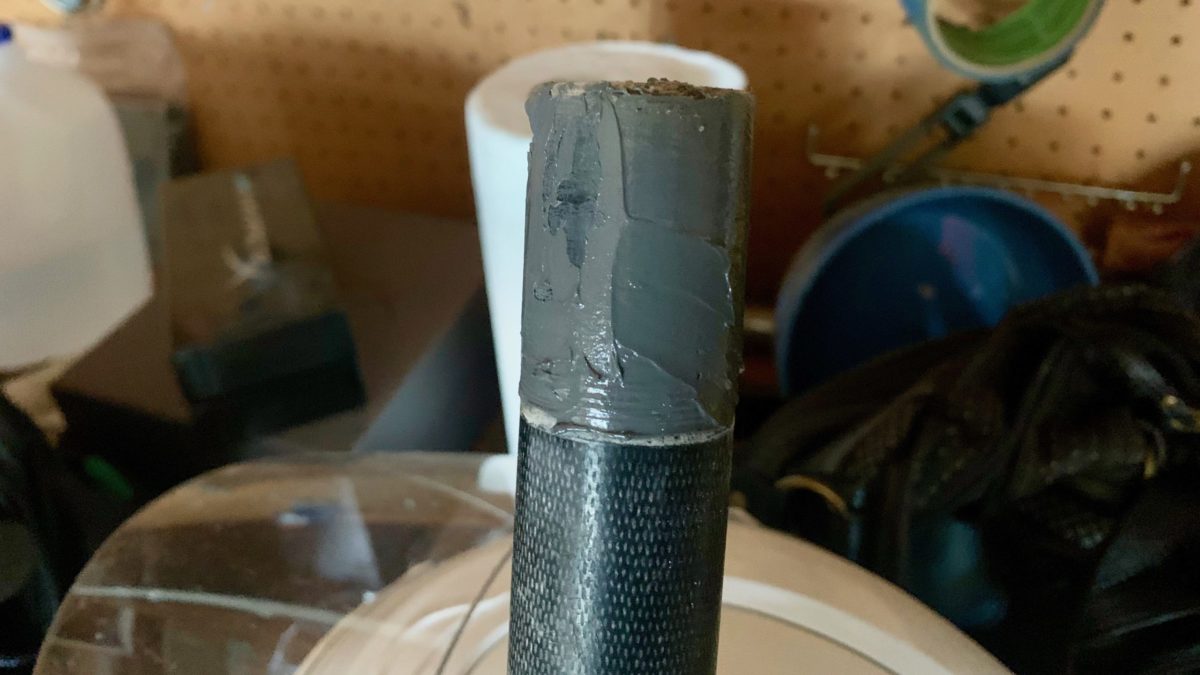
Glue Shaft End
Clamp and Let Dry
Use your guide lines to put the blade back onto the shaft at the original offset. Or you can use this time to change things up. Use your hose clamp to secure everything down. You can use this time to wipe away any excess epoxy if you want. You can also sand off any excess once the epoxy as cured.
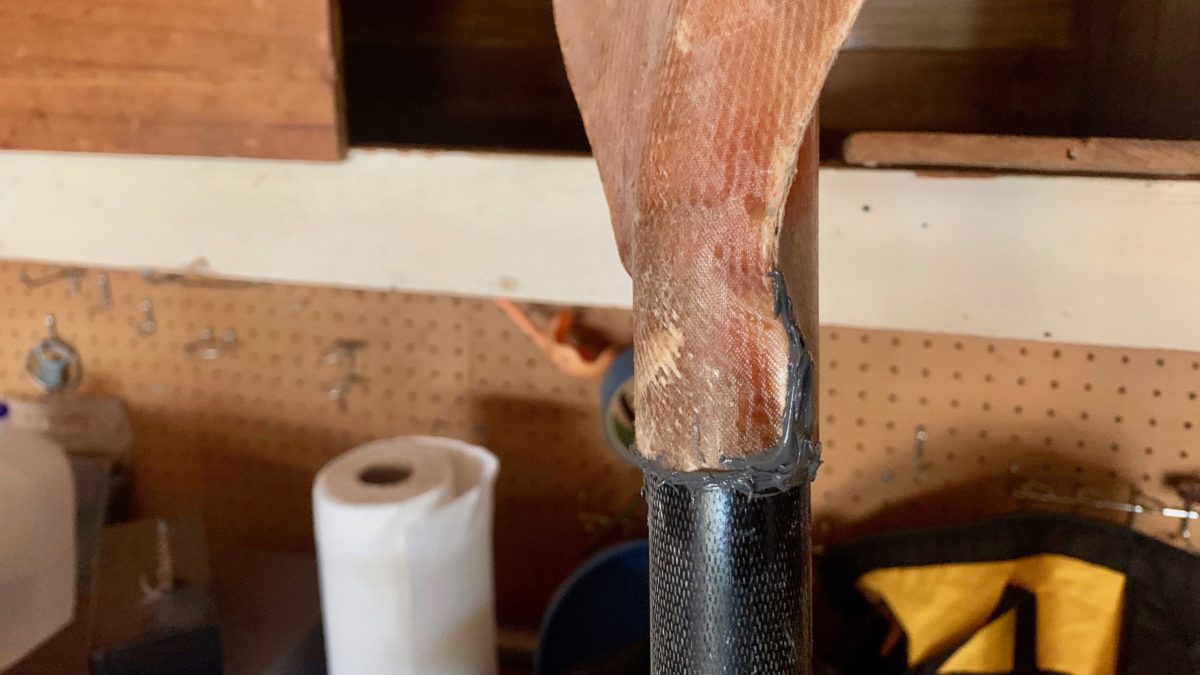
Clamp Togeher and Let Dry
I let my paddle sit for a full 24 hours to cure. Before I let it cure I tried to clean up some excess. However it still looked a little messy. I sanded things just a little to remove any pokey edges. While not perfect it looks pretty good.
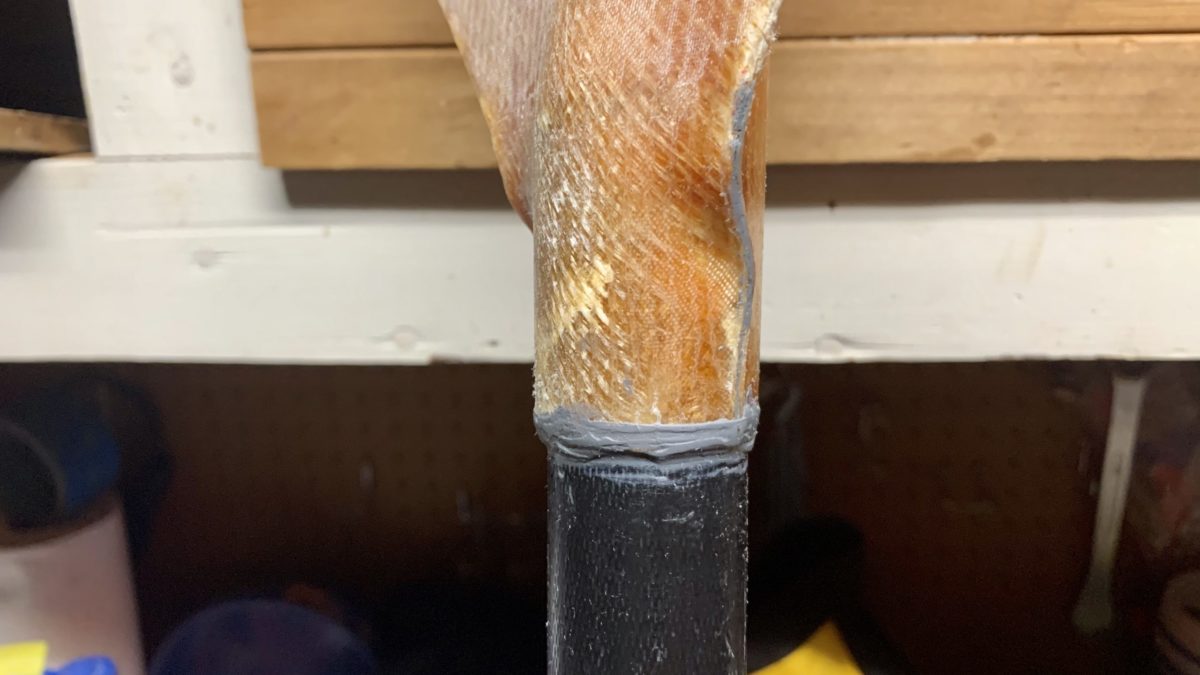
Cured and River Ready
Any other good tips or tricks for paddle repair? Please comment below.

